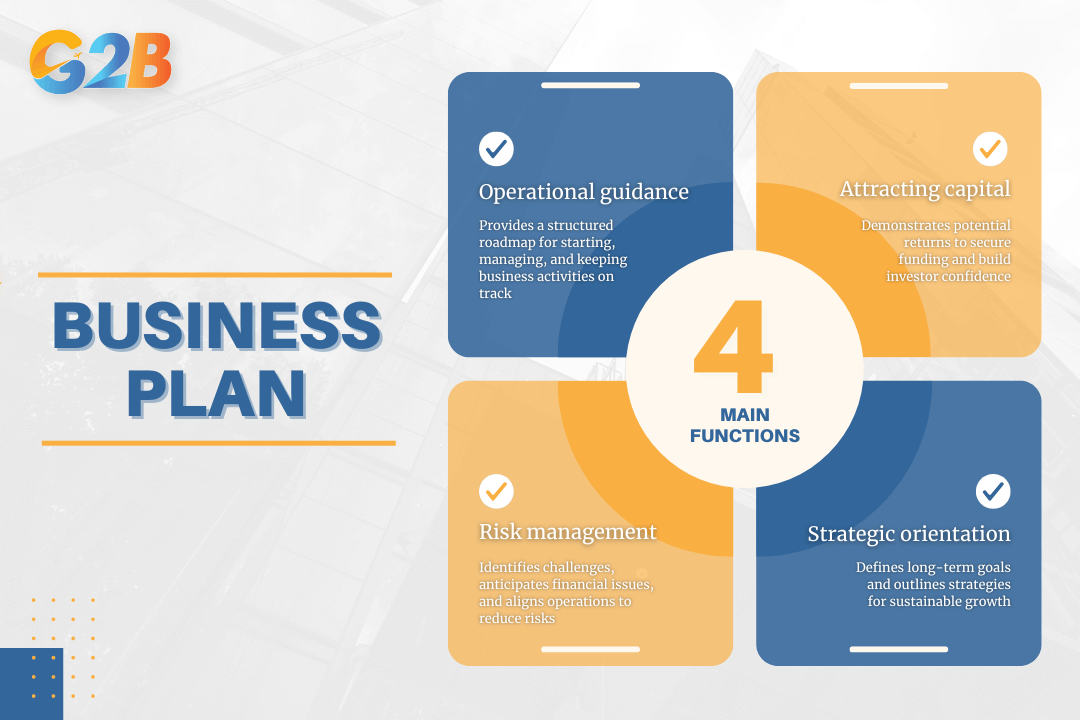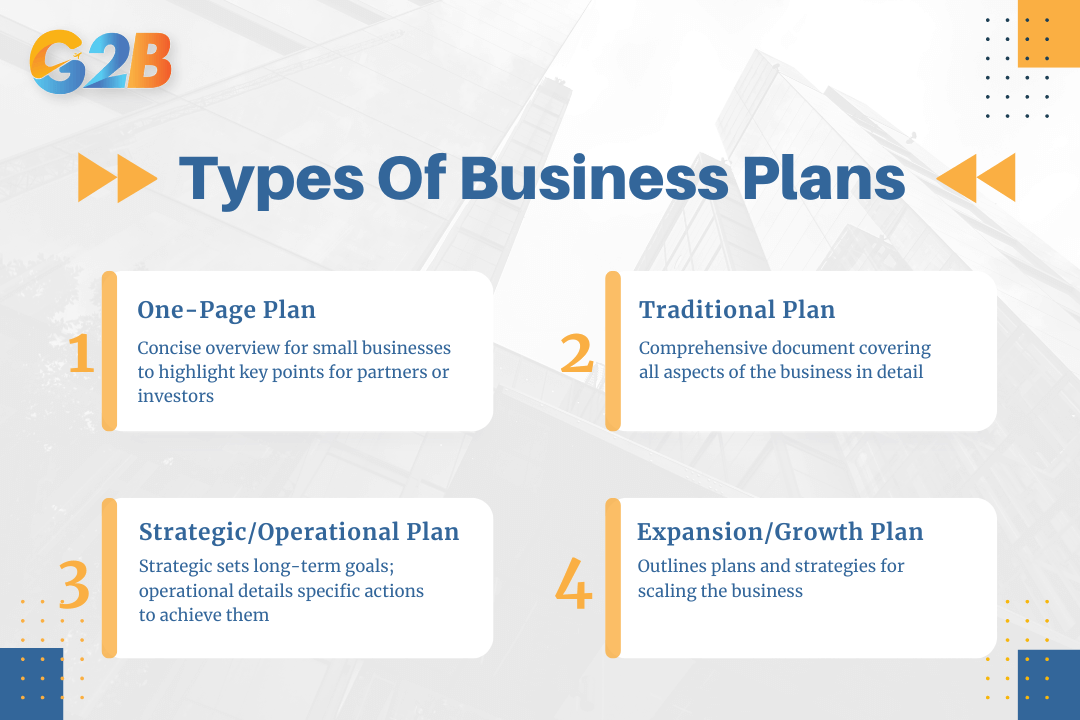A business plan serves as a roadmap to success, guiding a business from inception to profitability. This comprehensive guide covers essential aspects of creating an effective plan, from defining its core components to developing compelling financial projections. It explores various types of business plans, highlights key elements such as market analysis and financial forecasting, and outlines actionable steps to build a plan that appeals to investors and supports sustainable growth.
What is a business plan?
A business plan is a formal written document containing the goals of a business, the methods for attaining those goals, and the timeframe for the achievement of the goals. It serves as a roadmap (a plan) that provides direction to the business. A business plan describes the nature of the business, background information on the business, the business's financial projections, and the strategies it intends to implement to achieve the stated targets.
A business plan outlines a company's goals and the strategies to achieve. It's valuable for both startups and established companies. For startups, a well-crafted business plan is crucial for attracting potential lenders and investors. Established businesses use business plans to stay on track and aligned with their growth objectives.
Main functions of a business plan
A business plan serves several crucial functions for a business, acting as a guide for operational management, a tool for attracting investment capital, a framework for risk management, and an orientation for strategic development, encompassing all core business activities. It supports small business owners in making smarter decisions by providing a structured framework to assess all parts of their businesses.
1. Operational management guidance
A business plan acts like a GPS to help keep your business on track. It guides you through each stage of starting and managing a business. A business plan helps think through and detail all the key elements of how your business operates. By providing a structured approach, it allows for careful consideration of ideas before significant investment.
2. Attracting investment capital
A business plan helps obtain funding or bring in new business partners. It helps investors feel confident that they will see a return on their investment. A business plan is the tool to use to convince others that working with you (or investing in your business) is a smart choice. Potential investors or lenders want a written business plan before they give you money. A mere description of your business concept is not enough. A well-crafted business plan helps with attracting investment capital by showcasing the potential for a return on investment.
3. Risk management
A business plan helps avoid risks, keep everyone aligned, plan finances, assess the feasibility of your business idea, make operations smoother, and adapt to changes. It helps you predict future steps, identify future cash flow problems, allocate resources, and better understand competitors. It highlights potential obstacles to success and provides a tool for seeking objective feedback from trusted outsiders.
4. Strategic development orientation
A business plan explains your business strategy and key objectives to get from where you are to where you want to be in the future. It helps you make your business more profitable, gain more resources, or increase your assets. A business plan outlines strategies across the business, including financial projections, marketing plans, and operations. Without a business plan, objectives often become arbitrary.

A business plan serves several crucial functions for a business
What are the main contents of a business plan?
A comprehensive business plan includes several key sections, such as an executive summary, a company description, a market analysis, a marketing and sales strategy, an operational plan, an organizational structure & management team, a financial plan, a SWOT analysis, a funding request (if applicable), and appendices/exhibits.
- Executive summary: A brief overview of your business and what makes it stand out. It is a quick summary of the entire business plan, including company information, vision and mission, and key business objectives. A strong executive summary is your first chance to make a great impression.
- Company description: A detailed description of your business purpose and how you will operate. It provides detailed information about your company and delves into the problems your business solves. It explains the competitive advantages that will make your business successful.
- Market analysis: Demonstrates an in-depth knowledge of the competitive landscape and growth opportunities. Requires a good understanding of industry prospects and the target market. It includes details about the company's position, the type of customer the company intends to target, and how the company intends to gain market share from competitors. Market analysis is crucial for understanding your target audience, competitors, and the overall market landscape. Learn more about conducting effective market research.
- Marketing and sales strategy: Outlines the company's plans to attract and retain customers. Describes the distribution channels that will be used to deliver products or services to consumers. It details the company's advertising and promotion activities, pricing strategy, sales and distribution methods, and after-sales support.
- Operational plan: Describes how your business operates. It focuses on the internal operations of the company, including production, sales, marketing, and human resources. The purpose of an operational plan is to streamline internal operations to achieve the desired goals effectively.
- Organizational structure & Management team: Let the reader know how your company will be structured and who will run it. It introduces your company managers and summarizes their skills and primary job responsibilities. It explains who’s responsible for each part of your business and how everyone works together to reach your goals.
- Financial plan: Convinces the reader that your business is stable and will be financially successful. It should include income statements, balance sheets, and cash flow statements for the past three to five years. Explore our resources on creating accurate financial projections.
- SWOT analysis: Create a detailed list of your strengths, weaknesses, opportunities, and threats. It should be done in conjunction with identifying your competitive advantage.
- Funding request (if applicable): If you are requesting funding, this is where you will outline your funding requirements.
- Appendices/Exhibits: Additional important elements, such as patent applications, can be referenced in the main document and included as appendices.
Benefits of a business plan
A business plan offers numerous benefits, including increased project feasibility, support for step-by-step operation and financial management, help in controlling progress and risk, and the ability to attract and convince investors.
- Demonstrated feasibility of the project: Demonstrates that you have taken the time to think about the specifics and complexities of the operation and lists objective steps to success.
- Support step-by-step operation and financial management: Allows you to identify answers to some of the most important business decisions ahead of time.
- Help monitor progress and manage risk: Helps you see which parts of your strategy are working and which are not.
- Attract and convince investors: To demonstrate that the business has been carefully thought out and has a feasible path to profitability.

A business plan offers numerous benefits for entrepreneurs
Types of business plans
There are various types of business plans tailored to specific needs and business stages. The type of planning depends on your business stage and how you intend to use the plan.
- One-page business plan (Concise or lean plan): For very small businesses such as side jobs. It is a summary you use to pitch the most important highlights of your company to potential partners, vendors, lenders, and investors.
- Traditional business plan (Detailed or full plan): Includes A-Z of a company. It is an in-depth document covering every aspect of your business. A traditional business plan is broken up into 10 sections: Executive summary, Description of products and services, Market analysis, Competitive analysis, Marketing and sales plan, Business operations, Key milestones and metrics, Organization and management team, Financial plan, and Appendix.
- Strategic/Operational business plan:
- Strategic: Provides a high-level view of the company's goals and how it will achieve them.
- Operational: Outlines the specific actions and processes needed to achieve the organization's strategic goals.
- Expansion/Growth business plan: Provides detailed descriptions of proposed growth and is written for internal or external use.

There are 4 types of business plans, depending on the business stage
How to build a business plan effectively
Building a business plan involves a step-by-step process to ensure a comprehensive and effective document.
- Choose your business plan format and template: Select a format that suits your business needs, whether it's a traditional, lean, or one-page plan. There are free business plan templates that can guide you step-by-step.
- Consider your audience carefully: Consider who will be reading your plan and tailor it to their interests, whether it's investors, lenders, or internal stakeholders. Not tailoring the plan to the audience often leads to miscommunication and failed engagements.
- Write an overview of the company: Include your company's mission statement, history, and legal structure. Describe what your company does and where it is located.
- List your products and services: Describe in detail what you sell, highlighting unique features, competitive advantages, and benefits to customers. Include information on pricing and product lifespan.
- Conduct market analysis: Research your industry, target market, and competitors to demonstrate a deep understanding of the landscape. A thorough competitive analysis reveals the strengths and weaknesses of rivals.
- Develop a marketing plan: Outline your strategies for attracting and retaining customers, including advertising, promotions, and distribution channels. This includes your pricing strategy and sales forecast rationale.
- Provide a logistics and operations plan: Detail how your business will operate, including supply chain management, production processes, and distribution methods.
- Develop a financial plan: Include financial projections, such as income statements, balance sheets, and cash flow statements, to demonstrate the viability of your business.
- Draft an executive summary: Summarise the key points of your business plan, including your company's mission, products, market, and financial projections. Write this section last to ensure it accurately reflects the entire plan.
- Update and revise your business plan: Regularly review and update your plan to keep it aligned with your current goals and market conditions. A good business plan is never finished.
A well-crafted business plan is indispensable for business success. It serves as a comprehensive guide that helps register a company in Vietnam or operate domestically with a clear understanding of the market, sound financial management, realistic goal setting, and effective risk reduction. More than just a fundraising document, a business plan is a vital strategic tool that supports informed decision-making and drives business expansion. Every business, whether a startup or an established company, should invest the time to create and maintain a detailed business plan, increasing the chances of building a thriving, sustainable enterprise.


 Delaware (USA)
Delaware (USA)  Vietnam
Vietnam  Singapore
Singapore  Hong Kong
Hong Kong  United Kingdom
United Kingdom 
